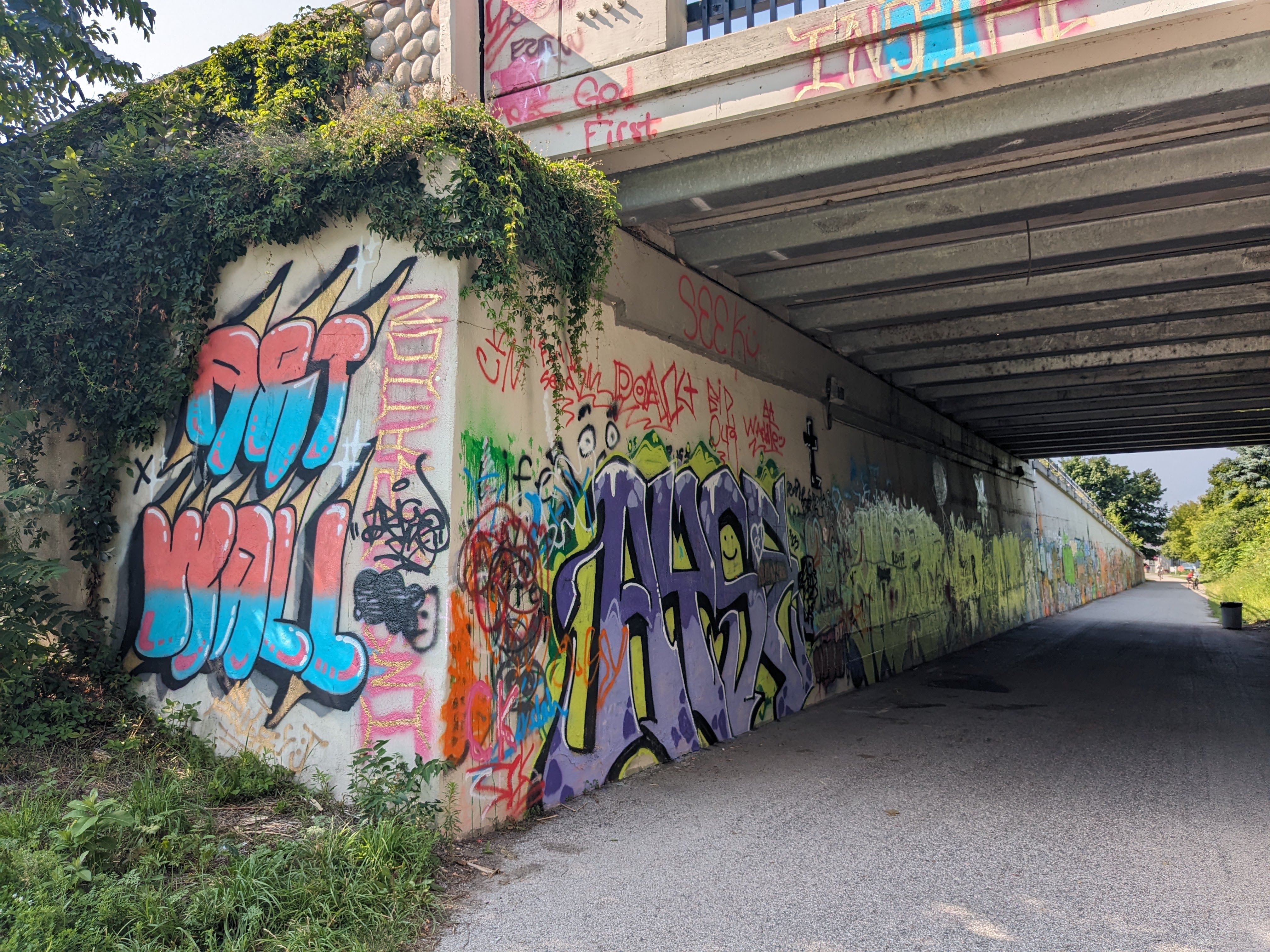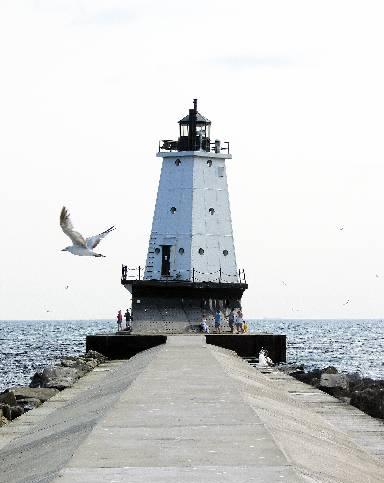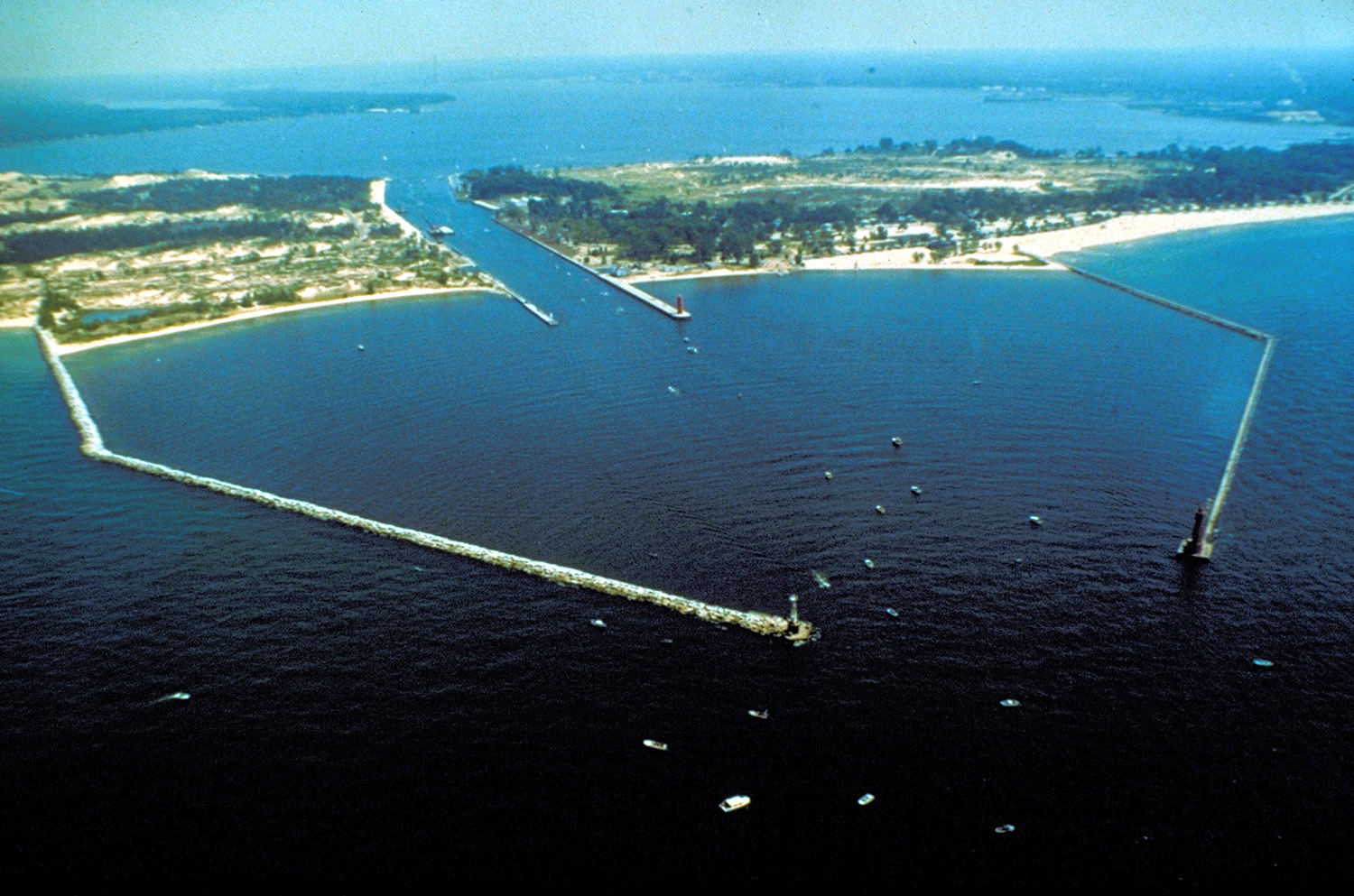|
Whitehall, Michigan
Whitehall is a city in Muskegon County in the U.S. state of Michigan. The population was 2,909 at the 2020 census. The city is located to the west of Whitehall Township. Montague is its neighbor. History It is located on White Lake (actually the mouth of the White River). Whitehall's recorded history ''circa'' 1859 when Charles Mears, a noted lumber baron to the area, platted the village along with Giles B. Slocum, naming it "Mears". The population continued to grow due to its strategic location for floating and distributing lumber. In 1862, it was renamed "Whitehall" and incorporated as a village in 1867. It was incorporated as a city in 1943. Geography Whitehall is in northwestern Muskegon County, about inland from Lake Michigan. White Lake originally emptied into Lake Michigan through a natural channel (see Logging the White: The White Lake Lumber Industry: 1837-1900 by Daniel J. Yakes, Ph. D. and Steven S. Demos, M.D. ontague, Michigan: Looking Aft Publications, 2010 ... [...More Info...] [...Related Items...] OR: [Wikipedia] [Google] [Baidu] |
City
A city is a human settlement of a substantial size. The term "city" has different meanings around the world and in some places the settlement can be very small. Even where the term is limited to larger settlements, there is no universally agreed definition of the lower boundary for their size. In a narrower sense, a city can be defined as a permanent and Urban density, densely populated place with administratively defined boundaries whose members work primarily on non-agricultural tasks. Cities generally have extensive systems for housing, transportation, sanitation, Public utilities, utilities, land use, Manufacturing, production of goods, and communication. Their density facilitates interaction between people, government organisations, government organizations, and businesses, sometimes benefiting different parties in the process, such as improving the efficiency of goods and service distribution. Historically, city dwellers have been a small proportion of humanity overall, bu ... [...More Info...] [...Related Items...] OR: [Wikipedia] [Google] [Baidu] |
White Lake (Michigan)
White Lake is the name of several lakes in the U.S. state of Michigan. The largest one is formed by the White River flowing to its mouth on Lake Michigan in Muskegon County. Muskegon County The largest White Lake is in Muskegon County, Michigan, formed by the White River near its mouth on Lake Michigan. The city of Montague, Montague Township and White River Township are on the north side of the lake. The city of Whitehall, Whitehall Township, and Fruitland Township are on the south side of the lake. The unincorporated community of Wabaningo is situated where the lake flows through a short navigation channel into Lake Michigan at . The lake takes its name from the white clay that long formed around its banks, which in the 18th and 19th centuries was used for washing by the lake's Ottawa residents. The Ottawa called the lake ''Waabigankiishkbogong'', meaning "The Place of White Clay." Others Other smaller lakes are located in the following counties: *The next lar ... [...More Info...] [...Related Items...] OR: [Wikipedia] [Google] [Baidu] |
Asian (U
Asian may refer to: * Items from or related to the continent of Asia: ** Asian people, people in or descending from Asia ** Asian culture, the culture of the people from Asia ** Asian cuisine, food based on the style of food of the people from Asia ** Asian (cat), a cat breed similar to the Burmese but in a range of different coat colors and patterns * Asii (also Asiani), a historic Central Asian ethnic group mentioned in Roman-era writings * Asian option, a type of option contract in finance * Asyan, a village in Iran See also * * * East Asia * South Asia * Southeast Asia Southeast Asia is the geographical United Nations geoscheme for Asia#South-eastern Asia, southeastern region of Asia, consisting of the regions that are situated south of China, east of the Indian subcontinent, and northwest of the Mainland Au ... * Asiatic (other) {{disambiguation ... [...More Info...] [...Related Items...] OR: [Wikipedia] [Google] [Baidu] |
Native American (U
Native Americans or Native American usually refers to Native Americans in the United States Native Americans (also called American Indians, First Americans, or Indigenous Americans) are the Indigenous peoples of the Americas, Indigenous peoples of the United States, particularly of the Contiguous United States, lower 48 states and A .... Related terms and peoples include: Ethnic groups * Indigenous peoples of the Americas, the pre-Columbian peoples of North, South, and Central America and their descendants * Indigenous peoples in Canada ** First Nations in Canada, Canadian Indigenous peoples who are neither Inuit nor Métis ** Inuit, Indigenous peoples inhabiting the Arctic and subarctic regions of Greenland, Labrador, Quebec, Nunavut, the Northwest Territories, and Alaska. ** Métis in Canada, specific cultural communities who trace their descent to early communities consisting of both First Nations people and European settlers * Indigenous peoples of Costa Rica * Indi ... [...More Info...] [...Related Items...] OR: [Wikipedia] [Google] [Baidu] |
African American (U
African Americans, also known as Black Americans and formerly also called Afro-Americans, are an Race and ethnicity in the United States, American racial and ethnic group that consists of Americans who have total or partial ancestry from any of the Black people, Black racial groups of Africa. African Americans constitute the second largest ethno-racial group in the U.S. after White Americans. The term "African American" generally denotes descendants of Slavery in the United States, Africans enslaved in the United States. In 2023, an estimated 48.3 million people self-identified as Black, making up 14.4% of the country’s population. This marks a 33% increase since 2000, when there were 36.2 million Black people living in the U.S. African-American history began in the 16th century, with Africans being sold to Atlantic slave trade, European slave traders and Middle Passage, transported across the Atlantic to Slavery in the colonial history of the United States, the Western He ... [...More Info...] [...Related Items...] OR: [Wikipedia] [Google] [Baidu] |
White (U
White is the lightest color and is achromatic (having no chroma). It is the color of objects such as snow, chalk, and milk, and is the opposite of black. White objects fully (or almost fully) reflect and scatter all the visible wavelengths of light. White on television and computer screens is created by a mixture of red, blue, and green light. The color white can be given with white pigments, especially titanium dioxide. In ancient Egypt and ancient Rome, priestesses wore white as a symbol of purity, and Romans wore white togas as symbols of citizenship. In the Middle Ages and Renaissance a white unicorn symbolized chastity, and a white lamb sacrifice and purity. It was the royal color of the kings of France as well as the flag of monarchist France from 1815 to 1830, and of the monarchist movement that opposed the Bolsheviks during the Russian Civil War (1917–1922). Greek temples and Roman temples were faced with white marble, and beginning in the 18th c ... [...More Info...] [...Related Items...] OR: [Wikipedia] [Google] [Baidu] |
Population Density
Population density (in agriculture: Standing stock (other), standing stock or plant density) is a measurement of population per unit land area. It is mostly applied to humans, but sometimes to other living organisms too. It is a key geographical term.Matt RosenberPopulation Density Geography.about.com. March 2, 2011. Retrieved on December 10, 2011. Biological population densities Population density is population divided by total land area, sometimes including seas and oceans, as appropriate. Low densities may cause an extinction vortex and further reduce fertility. This is called the Allee effect after the scientist who identified it. Examples of the causes of reduced fertility in low population densities are: * Increased problems with locating sexual mates * Increased inbreeding Human densities Population density is the number of people per unit of area, usually transcribed as "per square kilometre" or square mile, and which may include or exclude, for example, ar ... [...More Info...] [...Related Items...] OR: [Wikipedia] [Google] [Baidu] |
Census
A census (from Latin ''censere'', 'to assess') is the procedure of systematically acquiring, recording, and calculating population information about the members of a given Statistical population, population, usually displayed in the form of statistics. This term is used mostly in connection with Population and housing censuses by country, national population and housing censuses; other common censuses include Census of agriculture, censuses of agriculture, traditional culture, business, supplies, and traffic censuses. The United Nations (UN) defines the essential features of population and housing censuses as "individual enumeration, universality within a defined territory, simultaneity and defined periodicity", and recommends that population censuses be taken at least every ten years. UN recommendations also cover census topics to be collected, official definitions, classifications, and other useful information to coordinate international practices. The United Nations, UN's Food ... [...More Info...] [...Related Items...] OR: [Wikipedia] [Google] [Baidu] |
Business Loop
A business route (or business loop, business spur, or city route) in the United States is a short special route that branches off a parent numbered highway at its beginning, continues through the central business district of a nearby city or town, and finally reconnects with the same parent numbered highway at the business route's end. Their designation is often intended to direct traffic to the business districts bypassed when a new highway is constructed some distance away. Naming Business routes share the same number as the major (parent) routes they parallel. For example, U.S. Route 1 Business (US 1 Bus.) splits from and parallels US 1, and Interstate 40 Business (I-40 Bus.) splits from and parallels I-40. Typically, all business routes off the same parent route have the same name on signage. For example, St. Augustine business loop and Fredericksburg business loop are two of the many business routes stemming off US 1, all of which are marked as "US ... [...More Info...] [...Related Items...] OR: [Wikipedia] [Google] [Baidu] |
Ludington, Michigan
Ludington ( ) is a city in the U.S. state of Michigan. It is the county seat and the largest city in Mason County, Michigan, Mason County. The population was 7,655 at the 2020 United States census, 2020 census, making it the fourth largest city in the northern Michigan area. The city is located at the mouth of the Pere Marquette River at Lake Michigan. Nearby are Ludington State Park (which includes the Big Sable Point Light), Nordhouse Dunes Wilderness, and Manistee National Forest, making the area a popular tourist destination in the summer. Ludington is the home port of the SS Badger, SS ''Badger'', a vehicle and passenger ferry with daily service in the summer across Lake Michigan to Manitowoc, Wisconsin. History In 1675, Father Jacques Marquette, French people, French missionary and explorer, died and was laid to rest near the modern site of Ludington. A memorial and iron cross were built in 1955 to mark the location. In 1845, Burr Caswell moved to the area near the mout ... [...More Info...] [...Related Items...] OR: [Wikipedia] [Google] [Baidu] |
Muskegon, Michigan
Muskegon ( ) is a city in and the county seat of Muskegon County, Michigan, United States. Situated around a harbor of Lake Michigan, Muskegon is known for fishing, sailing regattas, and boating. It is the most populous city along Lake Michigan's eastern shore. At the 2020 United States census, 2020 census, the city's population was 38,318. The city is administratively autonomous from adjacent Muskegon Township, Michigan, Muskegon Township, and several locations in Muskegon Township and other surrounding townships have Muskegon addresses. Muskegon is the center of the Muskegon metropolitan statistical area, which is coextensive with Muskegon County and had a population of 175,824 as of the 2020 census. It is also part of the larger Grand Rapids, Michigan, Grand Rapids-Kentwood, Michigan, Kentwood-Muskegon-Grand Rapids metropolitan area, combined statistical area. History The name "Muskegon" is derived from the Ottawa dialect, Ottawa , meaning "marshy river or swamp". The "M ... [...More Info...] [...Related Items...] OR: [Wikipedia] [Google] [Baidu] |
Jacques Marquette
Jacques Marquette, Society of Jesus, S.J. (; June 1, 1637 – May 18, 1675), sometimes known as Père Marquette or James Marquette, was a French Society of Jesus, Jesuit missionary who founded Michigan's first European settlement, Sault Ste. Marie, Michigan, Sault Sainte Marie, and later founded St. Ignace, Michigan, Saint Ignace. In 1673, Marquette, with Louis Jolliet, an explorer born near Quebec City, was the first European to explore and map the northern portion of the Mississippi River Valley. Early life Jacques Marquette was born in Laon, France, on June 1, 1637. He was the third of six children for Rose de la Salle and Nicolas Marquette. The de la Salles were a wealthy merchant family. The Marquette family had been well-respected for many years, as numerous members had served in the military and taken civil posts. Jacques Marquette was sent to study at the Jesuit College in Reims at age 9. He remained there until he joined the Society of Jesus at age 17. Marquette tau ... [...More Info...] [...Related Items...] OR: [Wikipedia] [Google] [Baidu] |







